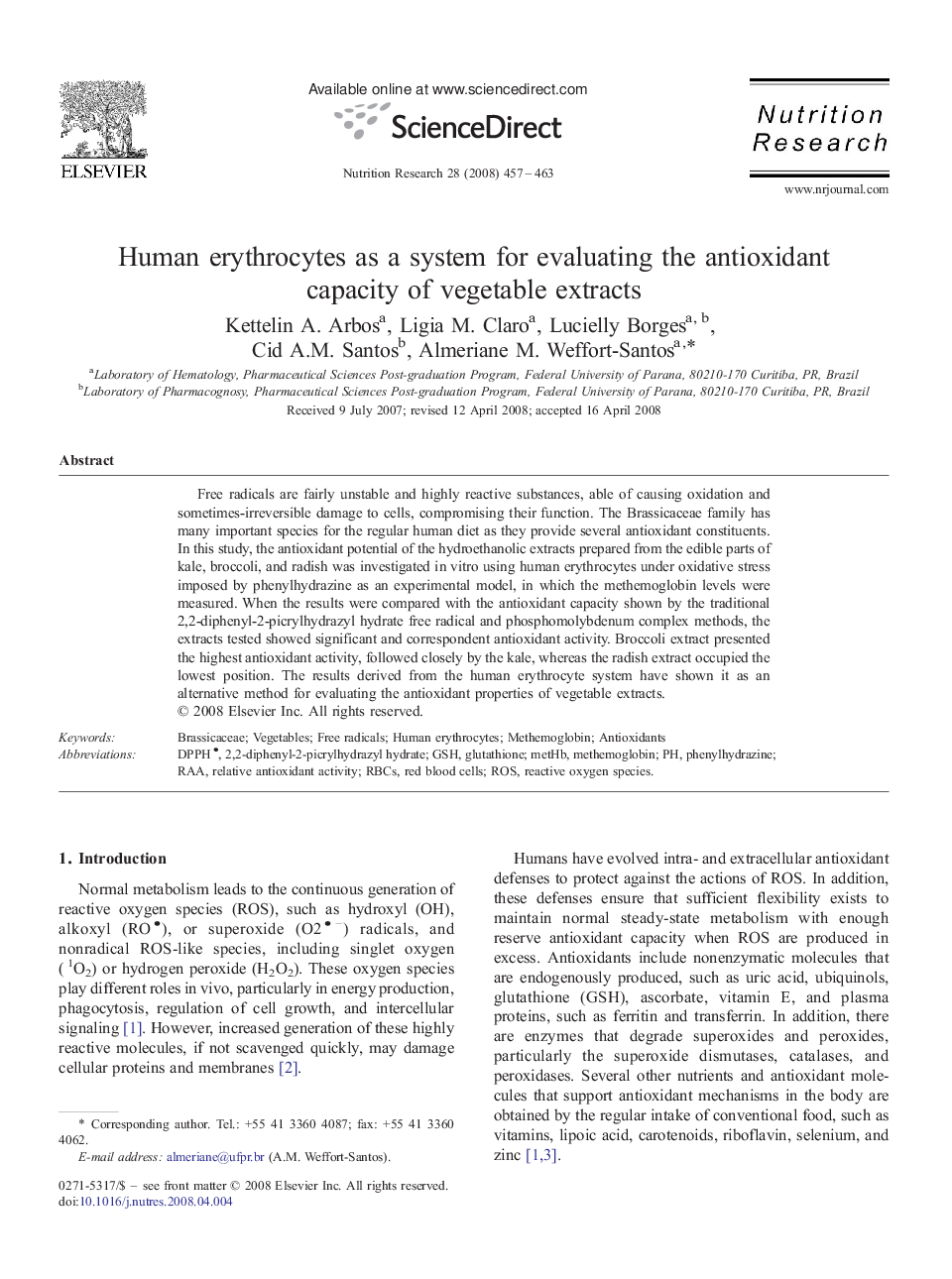| Article ID | Journal | Published Year | Pages | File Type |
|---|---|---|---|---|
| 2809694 | Nutrition Research | 2008 | 7 Pages |
Abstract
Free radicals are fairly unstable and highly reactive substances, able of causing oxidation and sometimes-irreversible damage to cells, compromising their function. The Brassicaceae family has many important species for the regular human diet as they provide several antioxidant constituents. In this study, the antioxidant potential of the hydroethanolic extracts prepared from the edible parts of kale, broccoli, and radish was investigated in vitro using human erythrocytes under oxidative stress imposed by phenylhydrazine as an experimental model, in which the methemoglobin levels were measured. When the results were compared with the antioxidant capacity shown by the traditional 2,2-diphenyl-2-picrylhydrazyl hydrate free radical and phosphomolybdenum complex methods, the extracts tested showed significant and correspondent antioxidant activity. Broccoli extract presented the highest antioxidant activity, followed closely by the kale, whereas the radish extract occupied the lowest position. The results derived from the human erythrocyte system have shown it as an alternative method for evaluating the antioxidant properties of vegetable extracts.
Related Topics
Life Sciences
Biochemistry, Genetics and Molecular Biology
Endocrinology
Authors
Kettelin A. Arbos, Ligia M. Claro, Lucielly Borges, Cid A.M. Santos, Almeriane M. Weffort-Santos,
